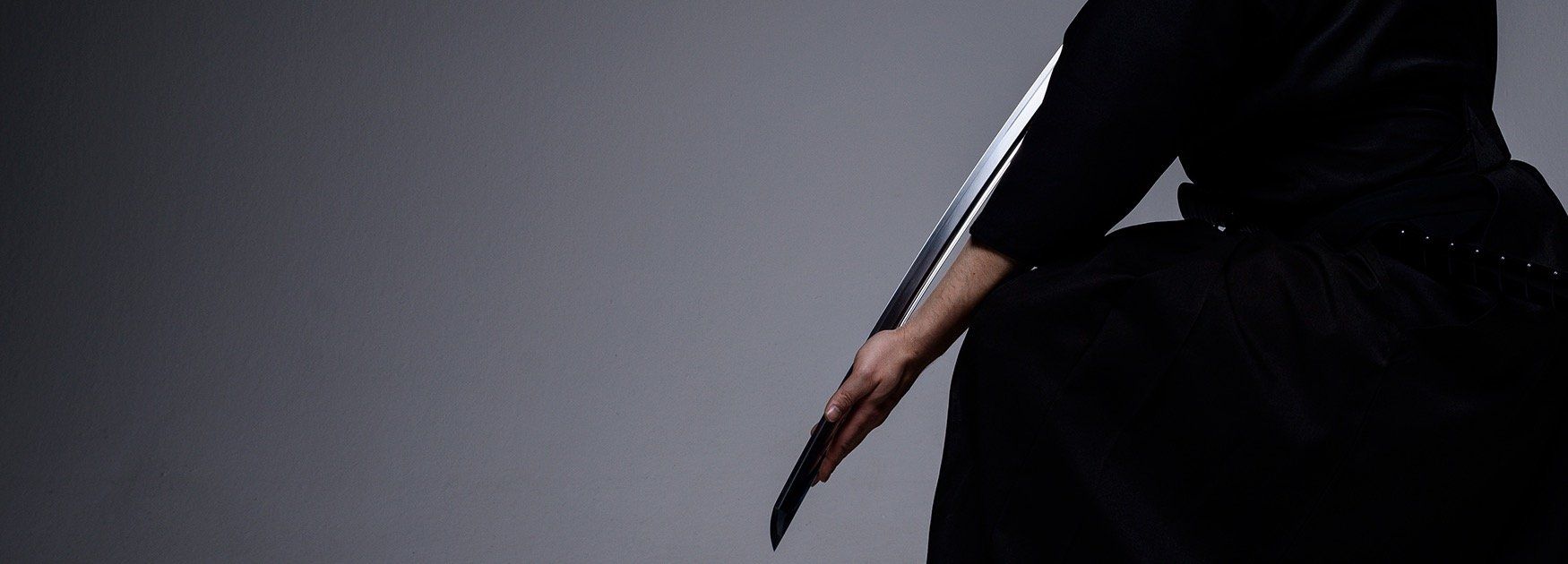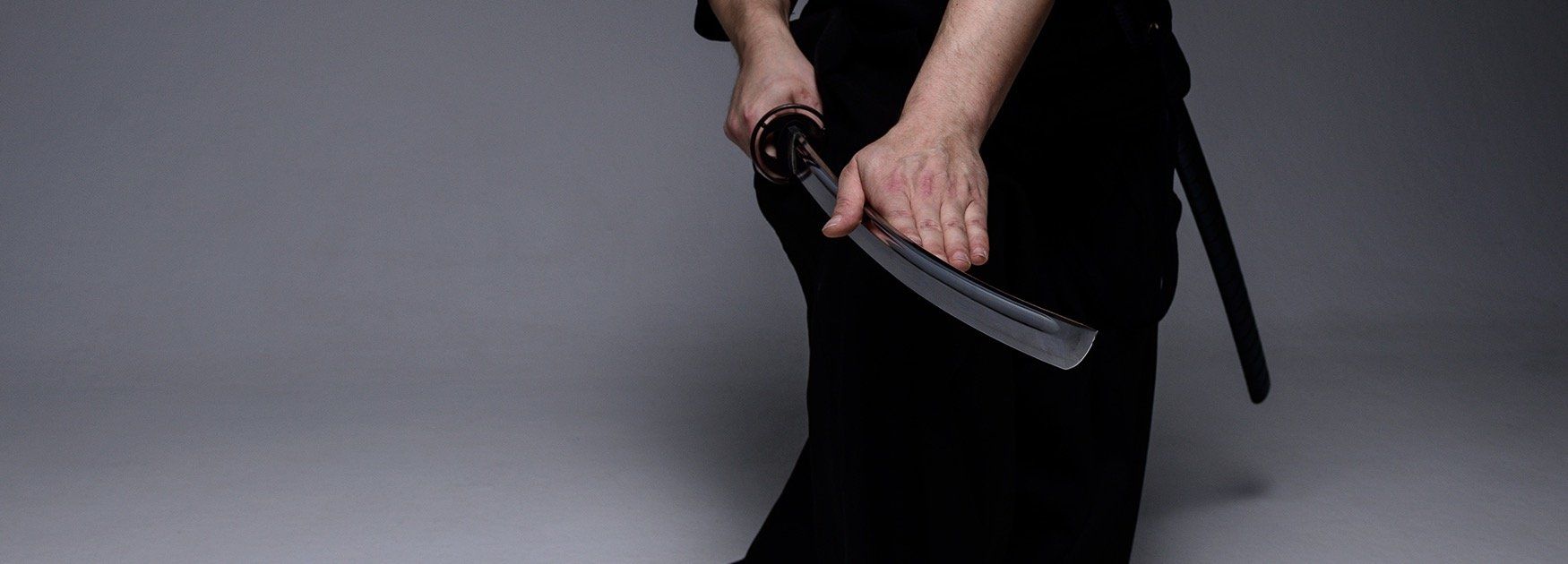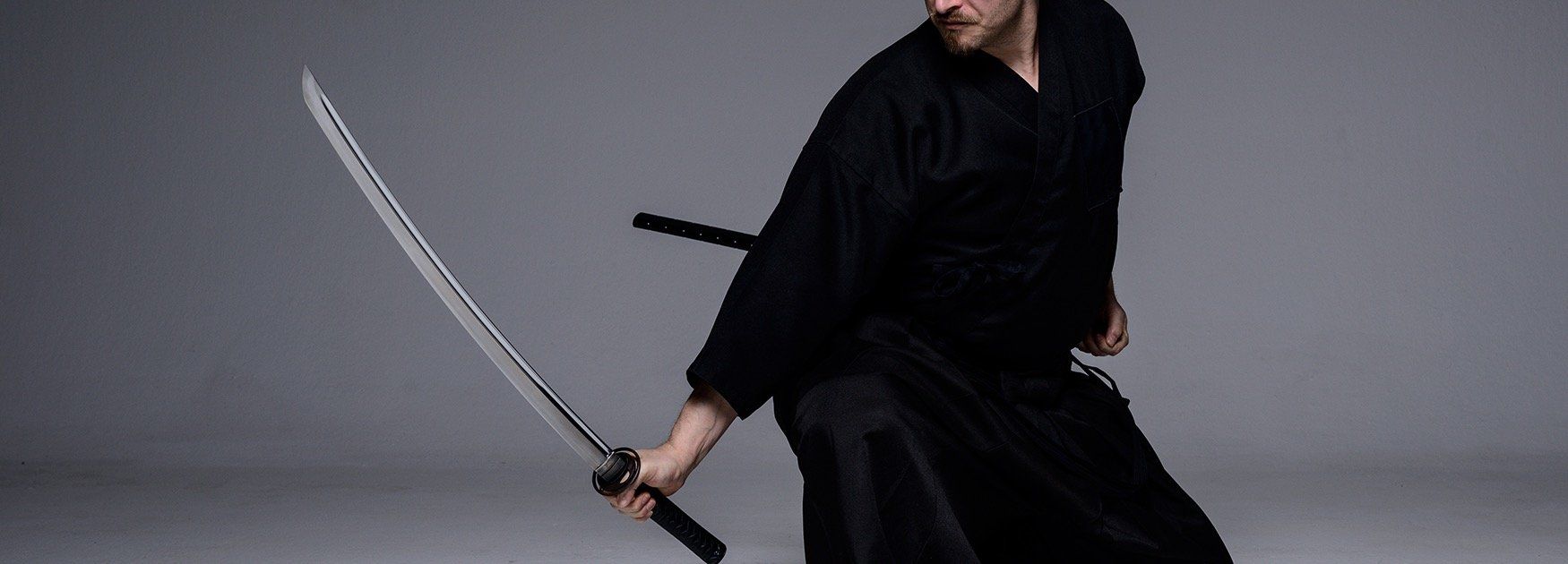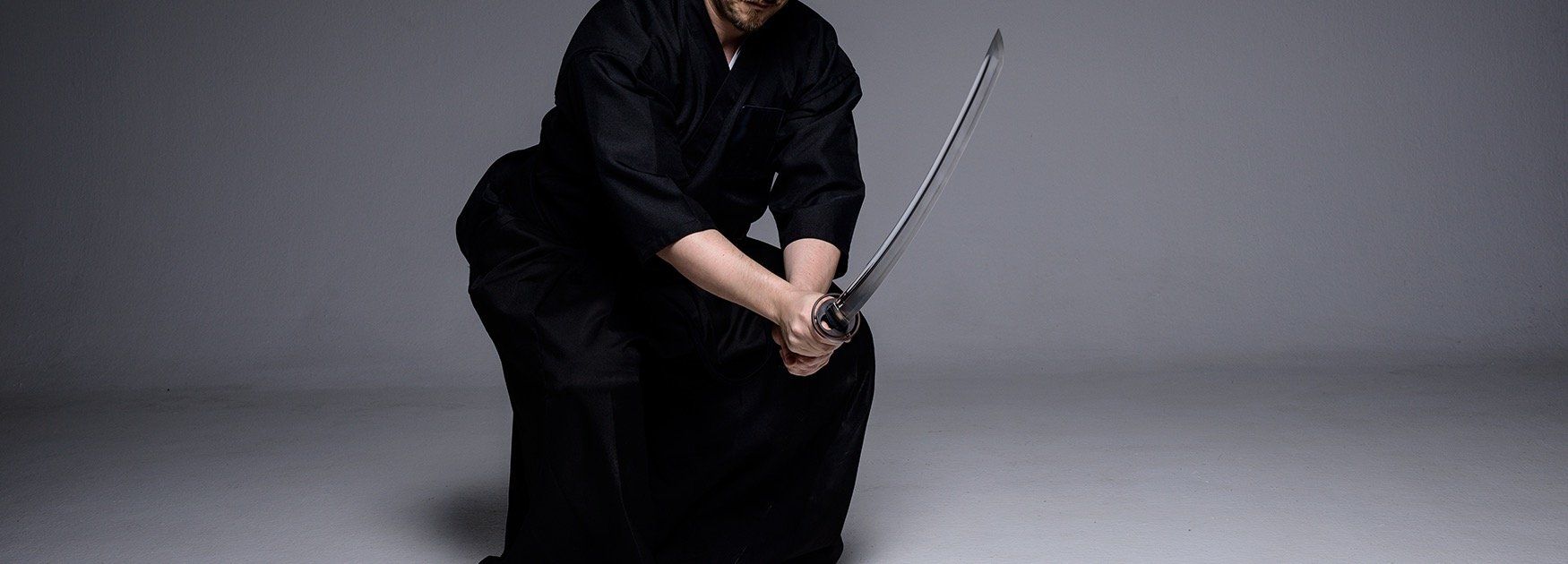Iaido Development
The foundations for today's Iaido were laid in the Edo period (1603 - 1868). At that time, after half a century of civil wars, Japan was at a time of peace and political stability. Under the rule of Tokugawa shogunate, culture flourished in Japan. The samurai's fighting techniques became less and less important. No longer constantly in combat, there was an increasing inclusion of spiritual ideas such as Taoism and Zen Buddhism in the fighting techniques.
By the end of the 16th century, the practice of sword techniques was no longer seen by some swordsmen as a fighting technique, but also as an instrument for educating and controlling oneself. In general, Hayashizaki Jinsuke Shigenobu (1546 - 1621) is considered the founder of Iaijutsu and is thus also a pioneer of Iaido. According to history, he looked for and developed an effective sword technique to be able to kill his father's murderer with just one sword stroke. Later the true nature of sword fighting is said to have opened up to him during his meditations.
Towards the end of the 19th century, the public carrying of swords was banned by Emperor Meiji. The sword fighting art came to a standstill. It was only through the involvement of people like Nakayama Hakudo (1873 - 1958) that traditional sword art was revived. He united several historical schools under the name Muso Shinden Ryu (Dream Spirit Tradition School).
The term Iaido only appeared in the middle of the 20th century. This term encompasses all sword fighting arts in which intellectual training is of great importance. Even today there are many styles that originate from Hayashizaki Jinsuke Shigenobu. These include, for example, the Muso Jikiden Eisin Ryu and the Muso Shinden Ryu. Both schools are the most widespread in Germany.
Meaning and Significance
The word Iaido consists of two syllables: iai and do . The syllable iai is composed of two characters. I (ru) = to be and ai (au) = together, harmony. Both together means something like "being completely there". The second syllable do means way. This path means the course of personal development and training. The focus of the do is always the practice of a certain skill with a predominantly spiritual aspect.
Unlike in European sports, in which the character formation is only a marginal phenomenon, if it happens at all, this is the focus of the do . The aim is to develop the skills in everyone so that they can fill their lives with awareness and knowledge. The task of Iaido is to learn how to move the sword in a targeted and safe manner in all possible situations. But this alone is not enough. Because then you would stop at the sword fighting technique Iaijutsu . At some point, true progress is no longer possible here.
In addition, Iaido is not just about the method of killing others with the sword, defeating them, but about overcoming your own ego. Your own self is meant to be hit and defeated by the sword, and the serious practitioner is forced to grapple with himself intensely due to the many difficulties in walking the path. Overcoming and constantly striving for improvement are the core of the training.
The classic situation of the swordsman having to deal with his opponent is representative of the actions in our modern, everyday life in Iaido. Saya no uchi no kachi saya is the greatest goal: Victory without pulling the sword.
Ultimately, Iaido involves a predictive and appropriate action in accordance with the circumstances.
Iaido in the German Iaido Federation
The German Iaido Federation (DIaiB e.V.) teaches the iaido of the ZEN NIHON KENDO RENMEI (All-Japan Kendo Federation) as a foundation, alongside the traditional schools.
This elementary school, consisting of twelve forms, was established in 1968 and incorporates many techniques from historical sword fighting styles.
ZNKR-Iai holds examinations and competitions worldwide. We also hold German Iaido Championships every year. Our national team represents Germany at the annual European Championships.
This brings us to a special feature that distinguishes iaido from other martial arts and combat sports in competitions. There is no gender or age discrimination. The only criterion is the achieved (dan) grade.
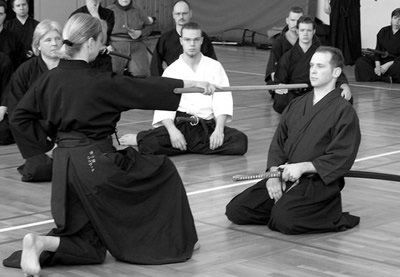
Sylvia Ordynsky Sensei, Iaido kyoshi 7th dan, explaining a ZNKR Iaido Kata.
Training
Iaido is a "disembodied" martial art. Each person practices the kata individually, with their opponents introduced.
The beginner first learns the individual elements that make up a kata. A kata is a given sequence of movements that is modeled on a real sword fight.
Each kata contains four elements:
drawing the sword (nukitsuke),
cutting (kiritsuke),
cleaning the sword (chiburi)
and inserting the sword (noto).
The special thing about Iaido is that everyone practices the kata for themselves, the opponents are introduced. Safe partner exercises with the bokken are possible. They can be used to clarify the function, distance, timing and dynamics of a kata.
Errors arise from yourself. Stressful thoughts, naive ideas or wrong movements challenge the practitioner. This makes it difficult, sometimes impossible, to carry out the natural movements.
It is only through constant acceptance of this challenge that one or the other movement gradually succeeds. Over time, the practitioner realizes that technology that is alien to them is being trusted. It becomes his own.
This unity of mind, body and sword ki ken tai itchi is striven for in all movements.
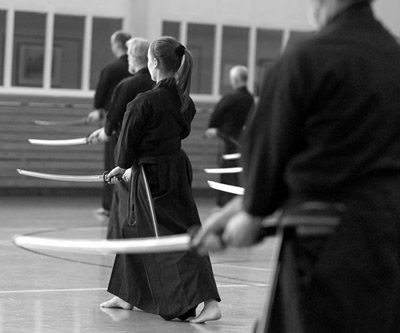
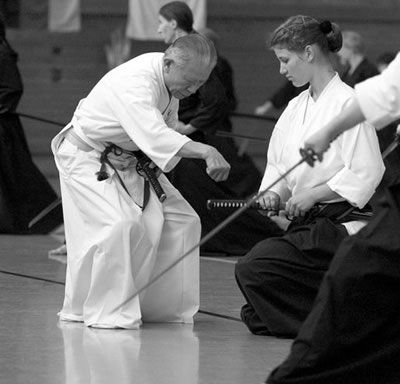
Manabu Soejima Sensei †, kyoshi 8th dan, demonstrating correct and incorrect hand positions on the sword handle.
The Japanese sword
The Japanese sword, katana, is famous all over the world. Not just because of its material properties. The carrying and use of this weapon was the sole privilege of the Japanese warrior class, the samurai, for a long time. But the katana is much more than just a naked weapon: it was and still is an expression of the samurai culture.
Because it was not only a weapon, it also served to characterize and develop the samurai. Three types of swords are used in Iaido training today:
- bokken, a wooden sword for partner exercises and basic / warm-up techniques.
- iaito, it corresponds to a sharp sword in shape, length, weight and appearance. However, the blade is not sharpened.
- And finally the sharp sword, also known as shinken. But this should only be used in training after many years of intensive practice.
An overview of the structure of a Japanese sword and the names of the individual sword parts can be found in the download area of the media library.



